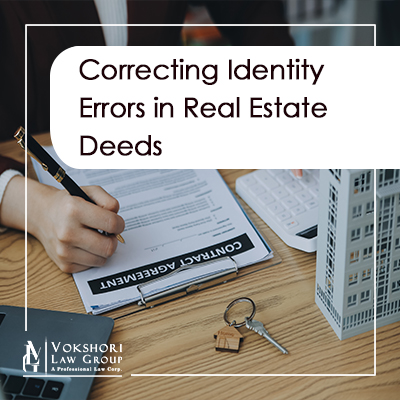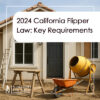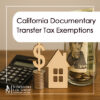
In the complex world of real estate, the accuracy of deed documentation is crucial for maintaining a clear chain of title. Errors in the names of grantees or grantors can lead to significant legal and financial complications. Understanding the process of correcting these errors is essential for property owners, real estate professionals, and attorneys. This blog delves into the methods and legal considerations for correcting identity errors in deeds, drawing insights from Miller & Starr’s authoritative guide on California real estate law.
The Importance of Correcting Deed Errors
When a deed contains a misnomer or a slight difference in the spelling of a name, it can create ambiguity about the identity of the property owner. Such discrepancies can disrupt the chain of title, making it difficult to establish clear ownership and potentially complicating future transactions. Correcting these errors is not just a matter of best practice but is often necessary to avoid litigation and ensure marketable title.
Corrective Measures for Identity Errors
-
Using the “Erroneously Named As” Process
- To maintain the chain of title, the incorrectly named grantee in the prior deed should be the grantor in the new corrective deed. For instance, if a property was mistakenly conveyed to “John Smith” instead of “John Smyth,” the corrective deed should list “John Smith (erroneously named as)” as the grantor and “John Smyth” as the grantee.
-
Attestation Statements
- While not always mandatory, an attestation statement can be beneficial in cases of chain of title litigation. This statement serves as additional proof that the error was recognized and corrected with the intent to clarify ownership.
-
Extrinsic Evidence
- When a deed is ambiguous, extrinsic evidence can be used to establish the true identity of the parties involved. This may include affidavits, historical records, or other documents proving the identity of the grantee or grantor.
-
Avoiding Corrective Deeds Outside the Chain of Title
- Re-recording the same deed with corrections on its face or issuing a new deed from the original grantor directly to the correct grantee does not effectively correct the chain of title. Instead, it creates breaks that can lead to insurability issues and legal disputes.
Case Studies from Miller & Starr
-
Misspellings and Common Names
- Errors such as “K F. Redman” vs. “K. F. Redmond” or “B. W. Robbins” vs. “B. W. Robben” illustrate how minor discrepancies can cause significant title issues. In these cases, extrinsic evidence or corrective deeds are necessary to resolve identity ambiguities.
-
Change in Name Due to Marriage or Legal Procedures
- When a person changes their name through marriage or other legal means, any conveyance must refer to both the previous name and the new name to maintain the chain of title. For example, a deed should state “Jane Doe, now known as Jane Smith.”
Legal and Practical Implications
Title companies and local governments rely on accurate deed records to ensure clear and marketable titles. Errors in these records can lead to:
- Refusal of title insurance coverage.
- Legal disputes over property ownership.
- Complications in selling or mortgaging the property.
Conclusion
Correcting identity errors in deeds is a critical step in maintaining a clear chain of title and ensuring the marketability of property. Real estate professionals and property owners should be diligent in addressing these errors promptly using the proper legal procedures. By following best practices and utilizing resources like extrinsic evidence and corrective deeds, one can prevent future complications and protect their investment.






